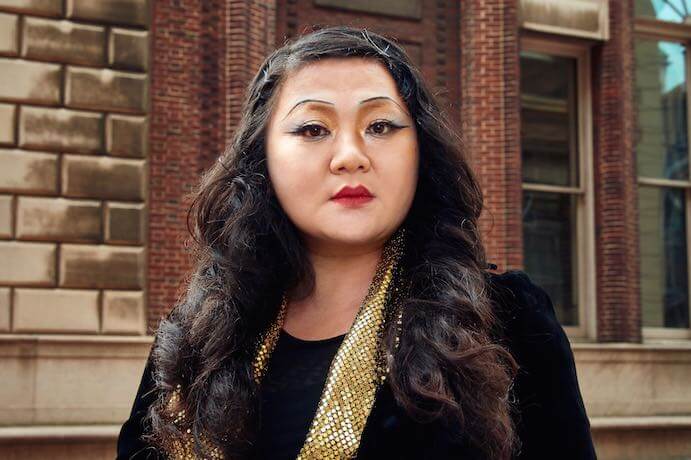It’s not just in writing or interpreting music that we consider time and place—listening is an act of context, too, and right now, healing, flourishing, and growth are ideas that provoke more than a bit of skepticism. But what distinguishes Brooklyn Rider’s Healing Modes (In a Circle Records) is that it doesn’t pretend to bring the listener fully to the end of that journey: healed. Healing Modes makes a strong case that healing is a process, one that makes space for the unavoidable discomfort or pain along the way. A hefty double album, Healing Modes alternates movements of Beethoven’s weighty Quartet No. 15 in A Minor, Op. 132 with five commissions in honor of the composer’s 250th birthday, all performed expertly by Johnny Gandelsman, Colin Jacobsen, Nicholas Cords, and Michael Nicolas. Across their performances of works new and old, the quartet displays boundless energy and nuanced care in shaping the big picture.
The album’s darker moods are present from the very beginning. The first track, borderlands… by Matana Roberts, references the crisis at the U.S.-Mexico border. “I decided to focus on a type healing that is about healing cultural rifts,” she explains. Murmuring voices open the track, intoning definitions and descriptions of the piece’s title. What begins as an undulating smear of disjunct tones is sculpted by the quartet into a massive wall of sound. Bouncing back and forth between foreboding and quiet confusion, the track fades into a mélange of ensemble grumbling of both voice and bow.

Brooklyn Rider–Photo by Erin Baiano
Reena Esmail composed Zeher (Poison) in the throes of a severe infection of her throat, one which hindered her ability to swallow, breathe, and even speak. Drawing on two Hindustani raags, Zeher (Poison) represents the feeling of release at that period’s conclusion. The quartet begins together with acrobatic, articulated flourishes. Ornate and elegant figurations are traded from cello to violin and back, framed and punctuated by the inner voices. With each iteration, violin and cello subtly re-shade their melodies, trading ecstatic embellishments for a resolute calm. In the final minutes, the punctuations elongate to overtake the cello’s melodies, and the piece exhales to a close.
On the heels of Esmail’s deeply reflective work comes Gabriela Lena Frank’s Kanto Kechua, a sprightly and whimsical piece that showcases Brooklyn Rider’s extreme flexibility. Frank’s piece, too, was born of her personal experiences with illness. Working to support Frank’s deft management of texture and scope, Brooklyn Rider creates a vivid landscape of intricate detail. Their lilting asymmetry gives way briefly to darker, more threatening moments, but the quartet’s precise inflections of mood and timbre seem always to change on a dime, back toward quiet optimism.
Inspired by Alice in Wonderland Syndrome, Du Yun’s i am my own achilles’ heel balances on the edge of distortion and clarity. Its soundworld is, as the composer puts it, “half-fantastical, half-hallucination.” An angrily sputtering, choked motive transforms as it is bounced between moods and textures. The recombination is never outright, and there seems always to be one voice protesting murkily in the background. Brooklyn Rider’s shifts back and forth to delicate and wispy harmonics are seamless, and their microtonal meandering through the piece’s closing gives the sensation of falling gently out of consciousness.

Du Yun–Photo by Matt Zugale for Miller Theare
The final commission of the album is Caroline Shaw’s Schisma, a direct engagement with the Beethoven movement that precedes it. From the Heiliger Dankgesang, Shaw draws an intimate scope and a “nest-like architecture.” In Schisma, the quartet augments and expands a line through experimentation with pacing and acceleration. Motivic statements are delivered in pairs, first in full strength then echoed in pizzicato. Harmonies change bit by bit, resultant of the changing overlays of individual parts. Brooklyn Rider responds with a well-defined and widely varied palette of timbral variation, from deep and resonant pizz through more articulated thwacks and nearly pitchless zings.
And Beethoven? Brooklyn Rider’s performance is stellar: even the thickest textures are balanced and sculpted to highlight the spark of parts interacting. But Beethoven’s presence extends beyond his quartet and into his birthday celebration commissions, too. Brief moments of resonance are abundant: the sonority of inner voices in close harmony against a soaring solo violin in i am my own achilles’ heel evoke the mysterious opening of Op. 132’s slow introduction. The interweaving countermelodies of Kanto Kechua mirror the echoes and shadows that adorn the edges of Beethoven’s second movement theme. Although the album’s liner notes invite us to hear Beethoven as an avant-gardist, “fearlessly pointing to the future,” these moments of symmetry instead direct our attention to the commissions’ basis in a dialogue with the past.
In the nearly 200 years since Beethoven’s death, musicians have become increasingly skeptical of teleological narrative arcs, that the healing inevitably has to result in healed. When the album closed with the declamatory “Allegro Appassionato,” I was left thinking about its distinct lack of triumph, its tiredness, and still feeling the haze of Du Yun’s composition. In those sad moments of Healing Modes, Brooklyn Rider preserves the bits of honesty so easy to overlook when the Op. 132 is presented by itself.























